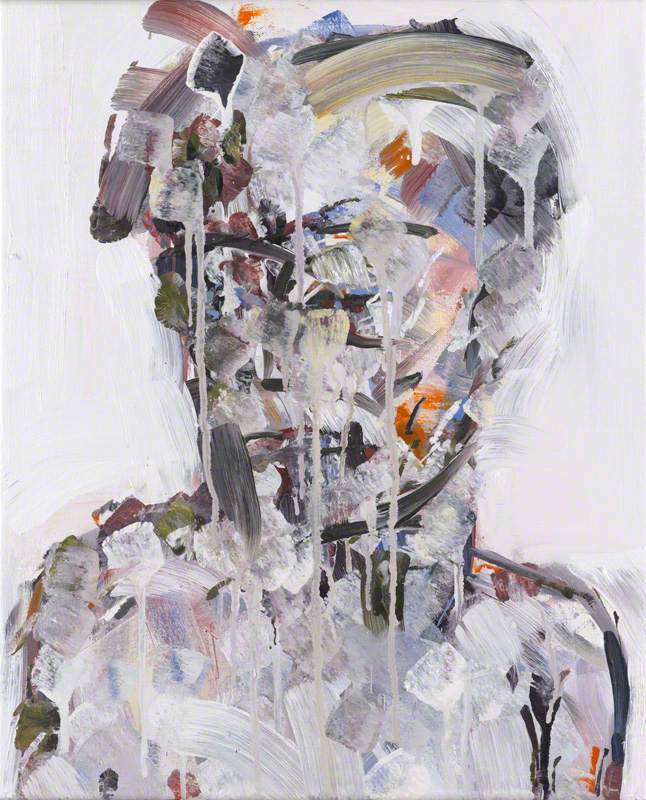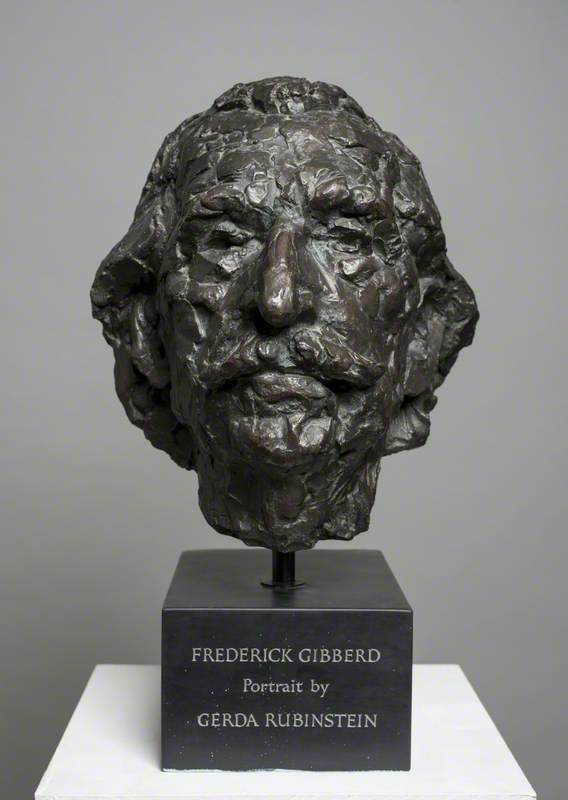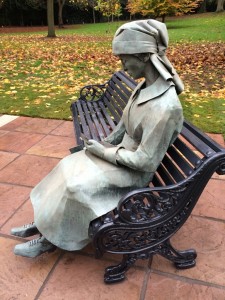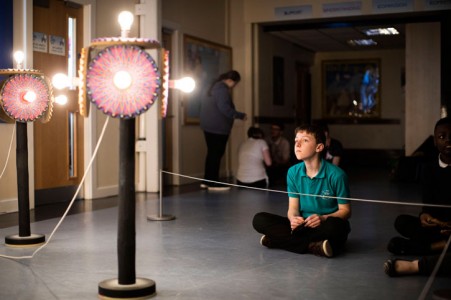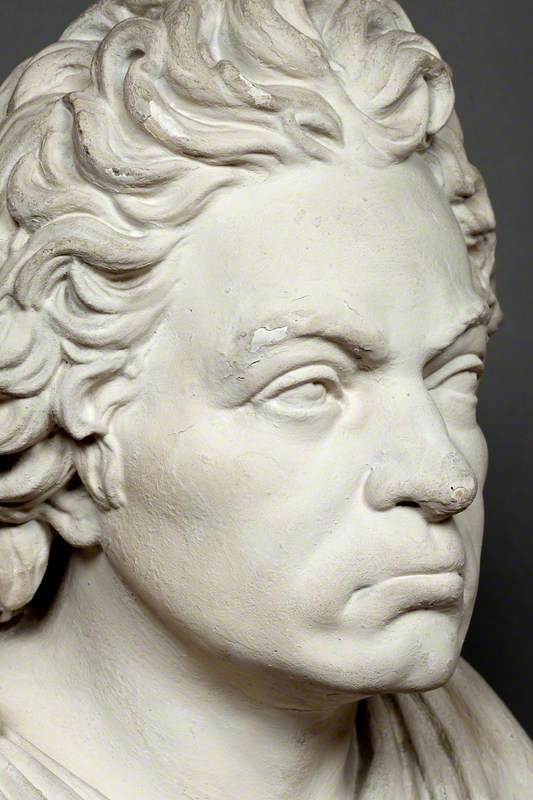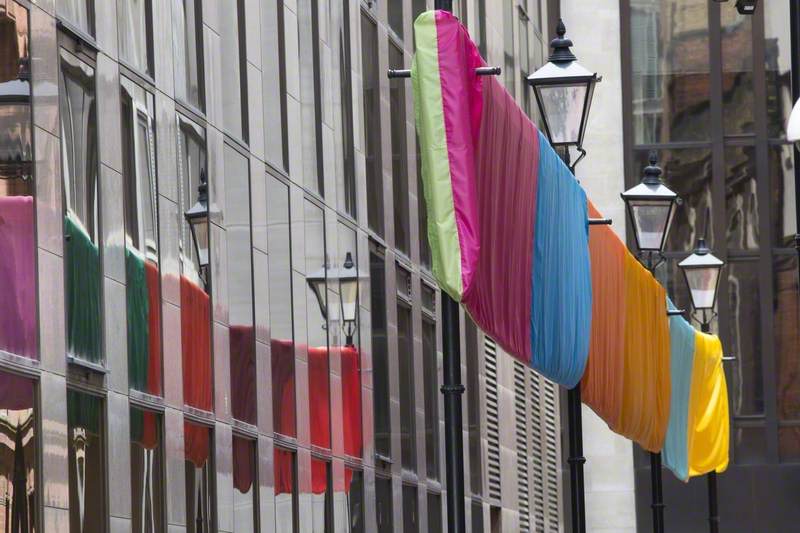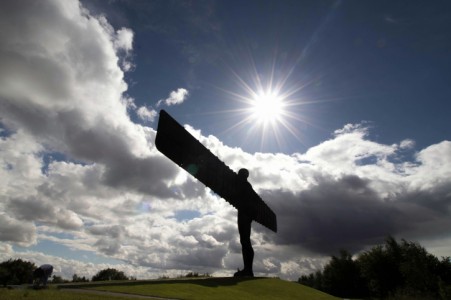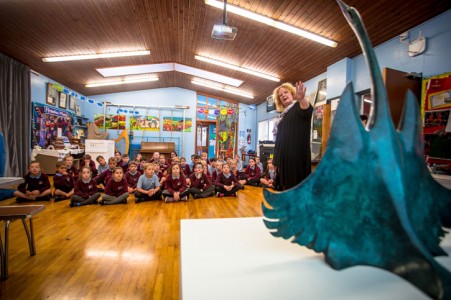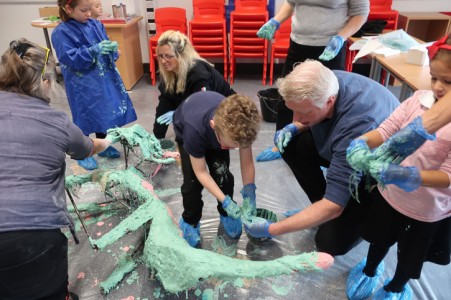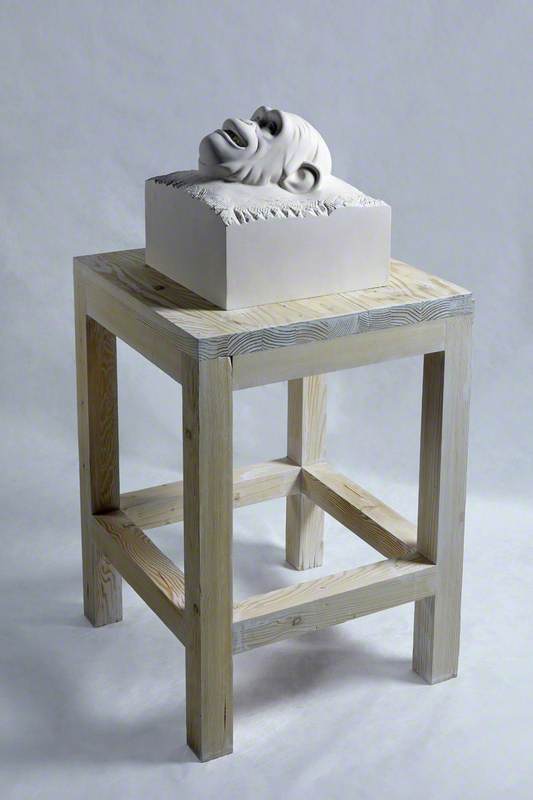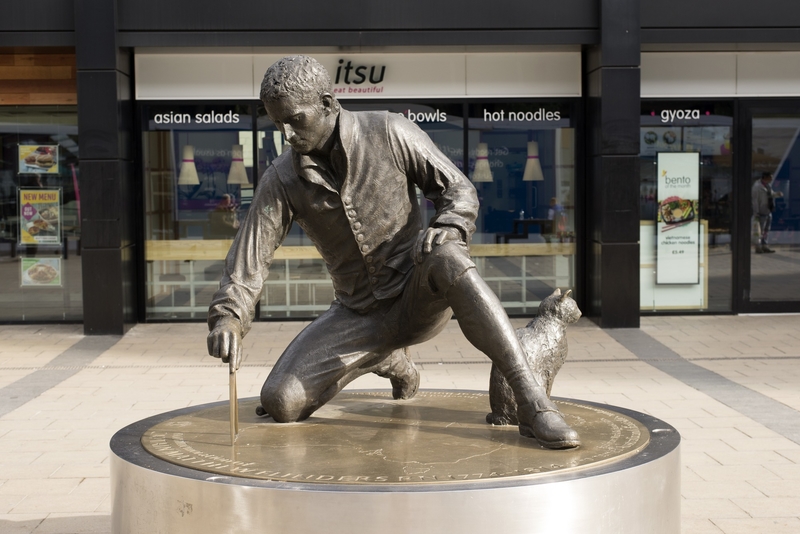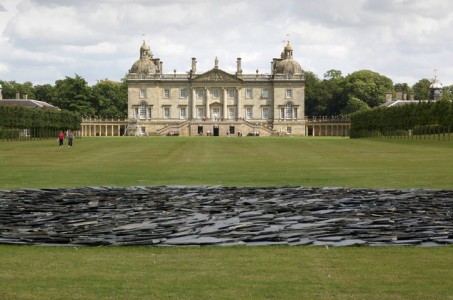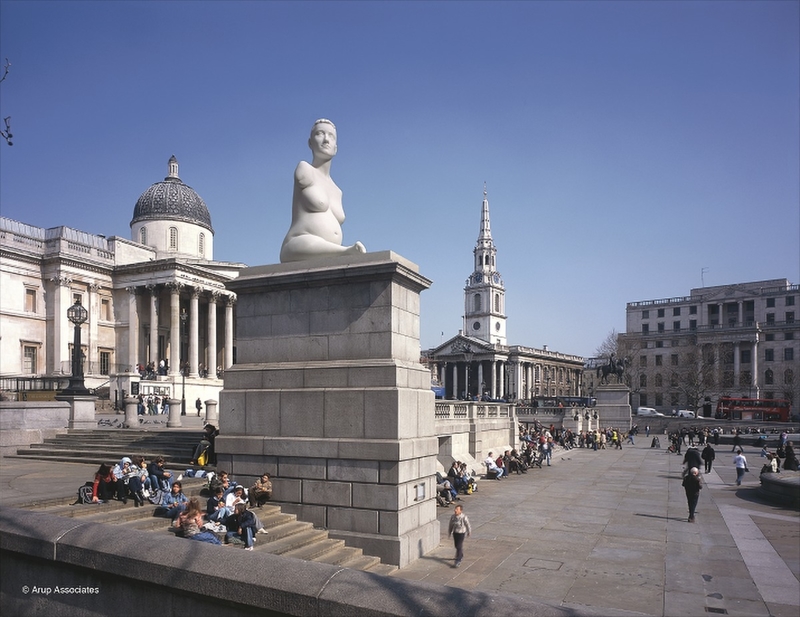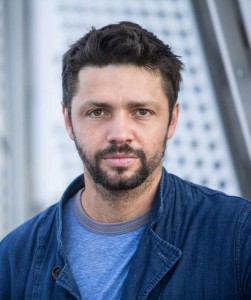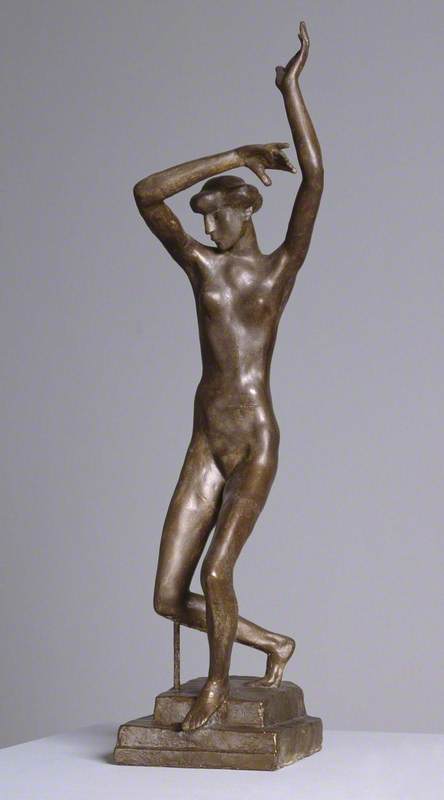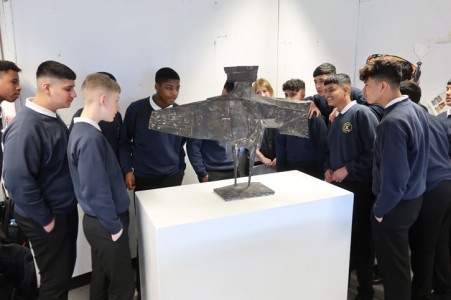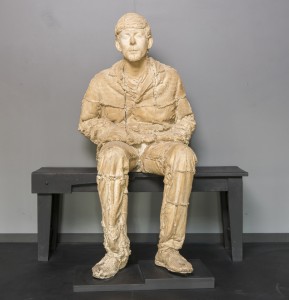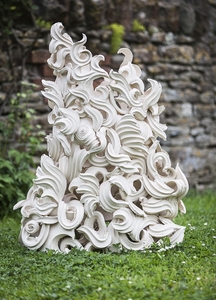Figurative art and sculpture have always been a source of inspiration to me – generating an emotional response and firing my imagination – probably because I am fascinated by people and animals, history and anthropology.
Andrew Sinclair working on his David Bowie sculpture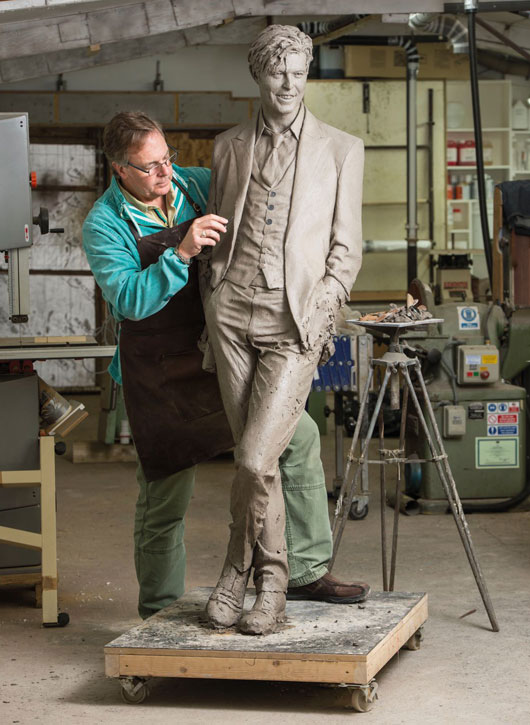
I find the science behind art captivating, and since I founded The Sculpture School, I have had to understand why I do what I do, to formulate a coherent system in order to explain to students how to sculpt. This has been a fascinating process that has not only generated a complete methodology for sculpting but has also taken my own personal sculpting ability to another level altogether. There is not a teaching session that goes by without me discovering a new 'rule of thumb' or anatomical rule that is a real 'light-bulb' moment! This is such an incredibly powerful aspect of teaching which has come as a complete surprise to me and is a huge bonus to my own work as well as my teaching.
Detail of Andrew Sinclair's Duke of Wellington's Regimental Memorial Sculpture, Halifax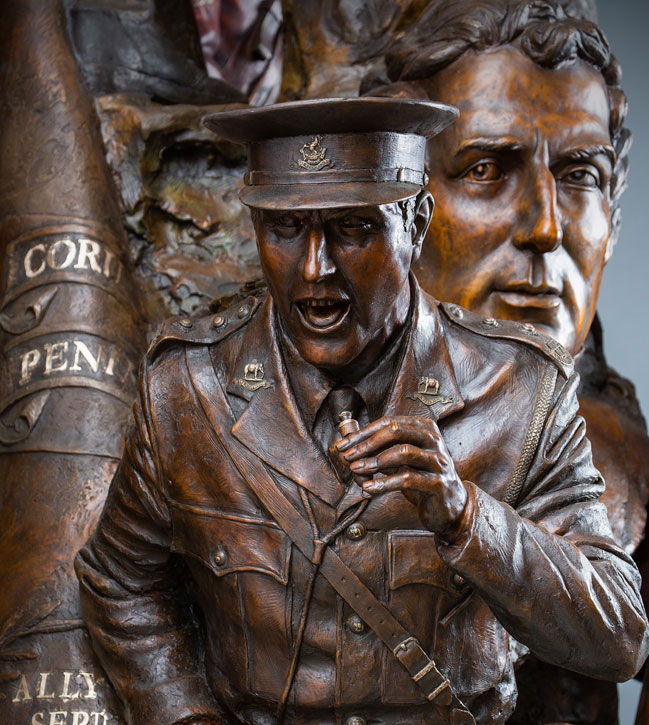
Anatomy, both human and animal, is inspirational and superb reference/research material. The more I understand and learn, the simpler my job becomes. For example, I no longer need to use a model to create a beautifully proportioned human figure because I understand its anatomy and physiology as well as having an artistic appreciation of design and proportion. In medical anatomy, muscles have an origin and insertion – in sculpture this is called rhythm and although rarely seen by the casual observer, to an accomplished sculptor this imbues life, energy and movement into every aspect of the sculpture. I have developed an alternative definition called Design Criteria which is an observation of the simple shapes and forms that groups of muscles make – essentially an artistic interpretation of anatomy. The Design Criteria charts we use at The Sculpture School are core to my teaching of sculpture.
Andrew Sinclair teaching figurative sculpture techniques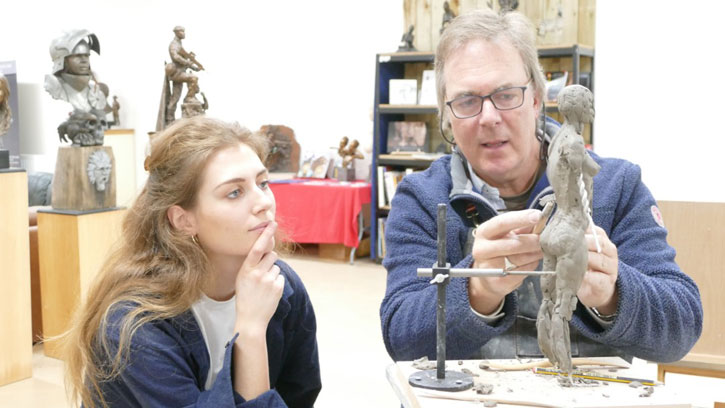
The thrill of being able to sculpt a figure in clay which is imbued with life and energy comes from constantly learning. I enjoy the knowledge. Science and art are intrinsically linked (there's no greater exponent of that than Leonardo da Vinci) and as such, is an important facet that needs to be considered when prioritising school curriculums. Art and science are symbiotic to my mind and my work would be the poorer without constantly researching how humans and animals work!
Sculptor Andrew Sinclair at work
Some might ask why we need to worry about creating realistic figurative art these days – surely this is considered by some as being old fashioned? For me, history judges a civilisation by its art, and society in general likes to celebrate significant achievements of important people. Having the skill to create the likeness of a person and capture the essence of their character is vital to my work as a commissioned artist. I like to instil narrative within a sculpture, weaving the story of someone's life and character into the clay – it evokes reaction, intrigue, fascination and the desire to come back and find more secrets hidden within. Adding narrative makes the sculpture so much more than just a person's replica. This is definitely the case with my David Bowie sculpture, unveiled in Aylesbury in March 2018.
Andrew Sinclair working on his David Bowie sculpture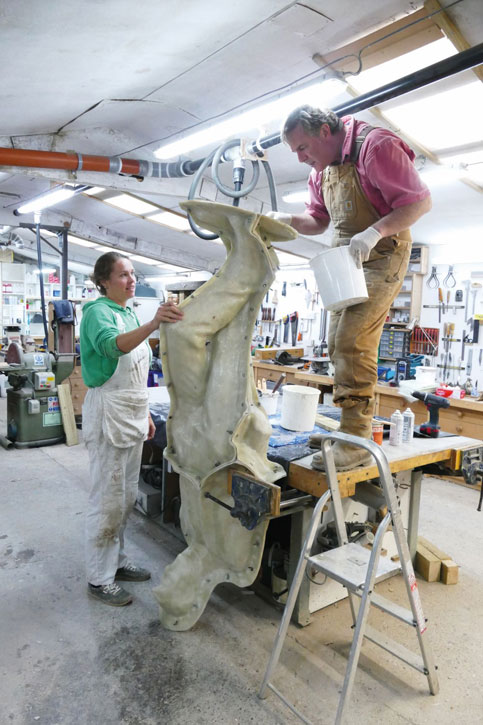
He was such a complex character, that to depict him with just one figure would not have done him or his career justice, so my sculpture has Ziggy Stardust as the main figure, with a more mature Bowie standing behind him, looking back at his younger incarnation, with a bas-relief background featuring 13 portraits of Bowie's multiple personas throughout his career.
Earthly Messenger (David Bowie, 1947–2016)
2016–2018
Andrew Sinclair (b.1961) and Paul O'Boyle 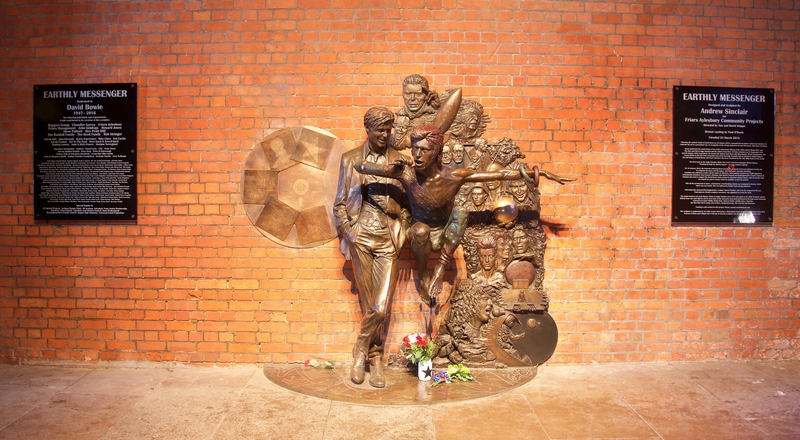
Weaving through the whole sculpture are the themes of the 'man who fell to earth' and Bowie's tale of Major Tom lost in space, space itself, the planet Mars, and the spoil of a rocket ship intertwining among them all.
The finished David Bowie sculpture in Aylesbury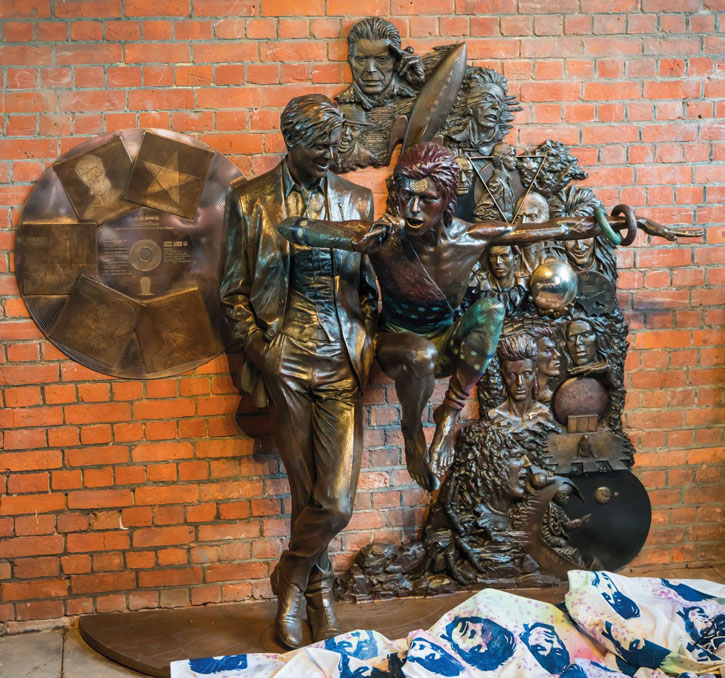
Sculpture is all about inspiration and, as far as I'm concerned, should speak to the heart, create a reaction, make people think. Most of all it should look stunning – and have a WOW factor! This is what I'm looking to achieve in all my work, and what I look for in other people's.
Andrew Sinclair, sculptor

